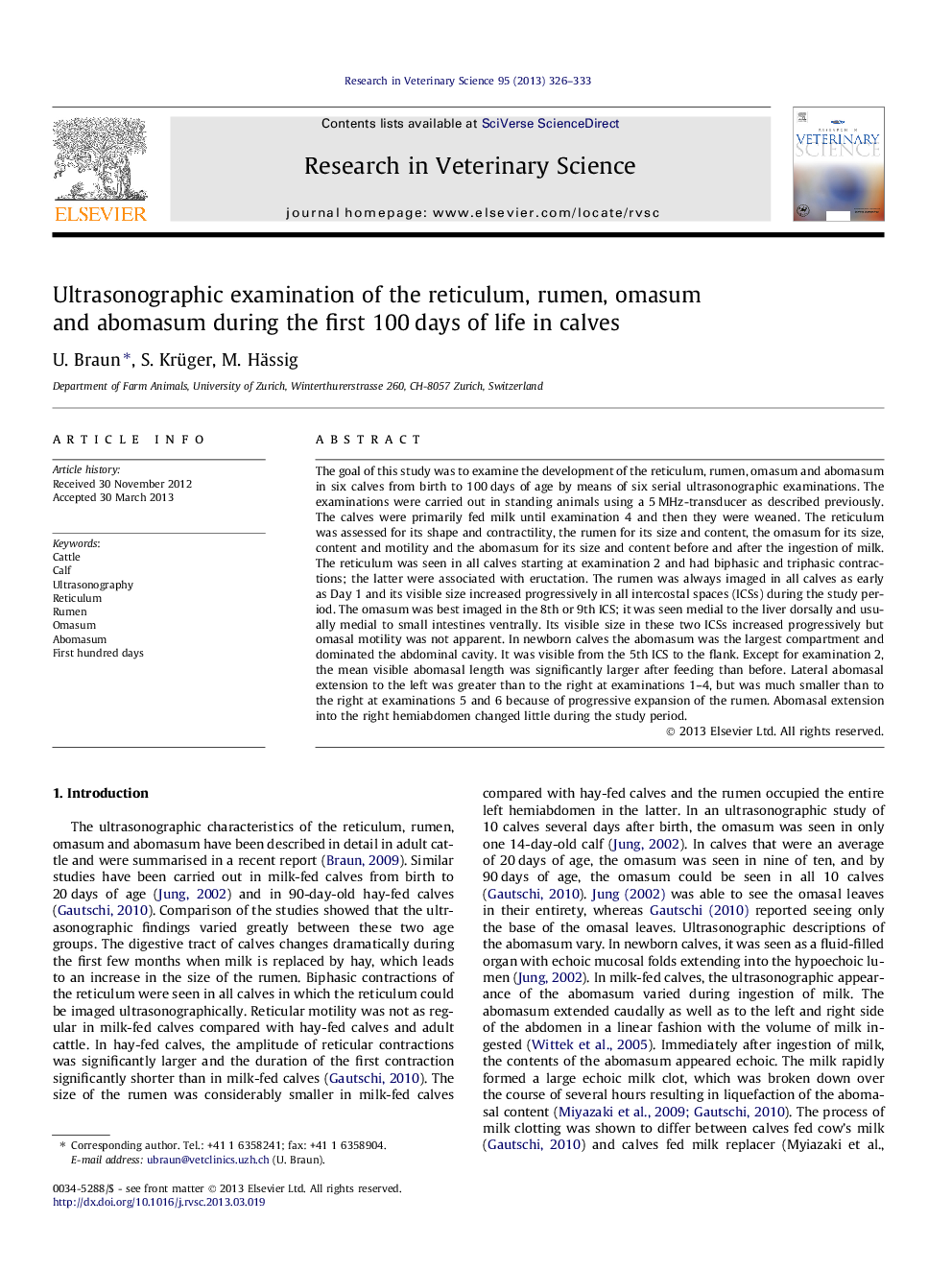| Article ID | Journal | Published Year | Pages | File Type |
|---|---|---|---|---|
| 2455075 | Research in Veterinary Science | 2013 | 8 Pages |
The goal of this study was to examine the development of the reticulum, rumen, omasum and abomasum in six calves from birth to 100 days of age by means of six serial ultrasonographic examinations. The examinations were carried out in standing animals using a 5 MHz-transducer as described previously. The calves were primarily fed milk until examination 4 and then they were weaned. The reticulum was assessed for its shape and contractility, the rumen for its size and content, the omasum for its size, content and motility and the abomasum for its size and content before and after the ingestion of milk. The reticulum was seen in all calves starting at examination 2 and had biphasic and triphasic contractions; the latter were associated with eructation. The rumen was always imaged in all calves as early as Day 1 and its visible size increased progressively in all intercostal spaces (ICSs) during the study period. The omasum was best imaged in the 8th or 9th ICS; it was seen medial to the liver dorsally and usually medial to small intestines ventrally. Its visible size in these two ICSs increased progressively but omasal motility was not apparent. In newborn calves the abomasum was the largest compartment and dominated the abdominal cavity. It was visible from the 5th ICS to the flank. Except for examination 2, the mean visible abomasal length was significantly larger after feeding than before. Lateral abomasal extension to the left was greater than to the right at examinations 1–4, but was much smaller than to the right at examinations 5 and 6 because of progressive expansion of the rumen. Abomasal extension into the right hemiabdomen changed little during the study period.
